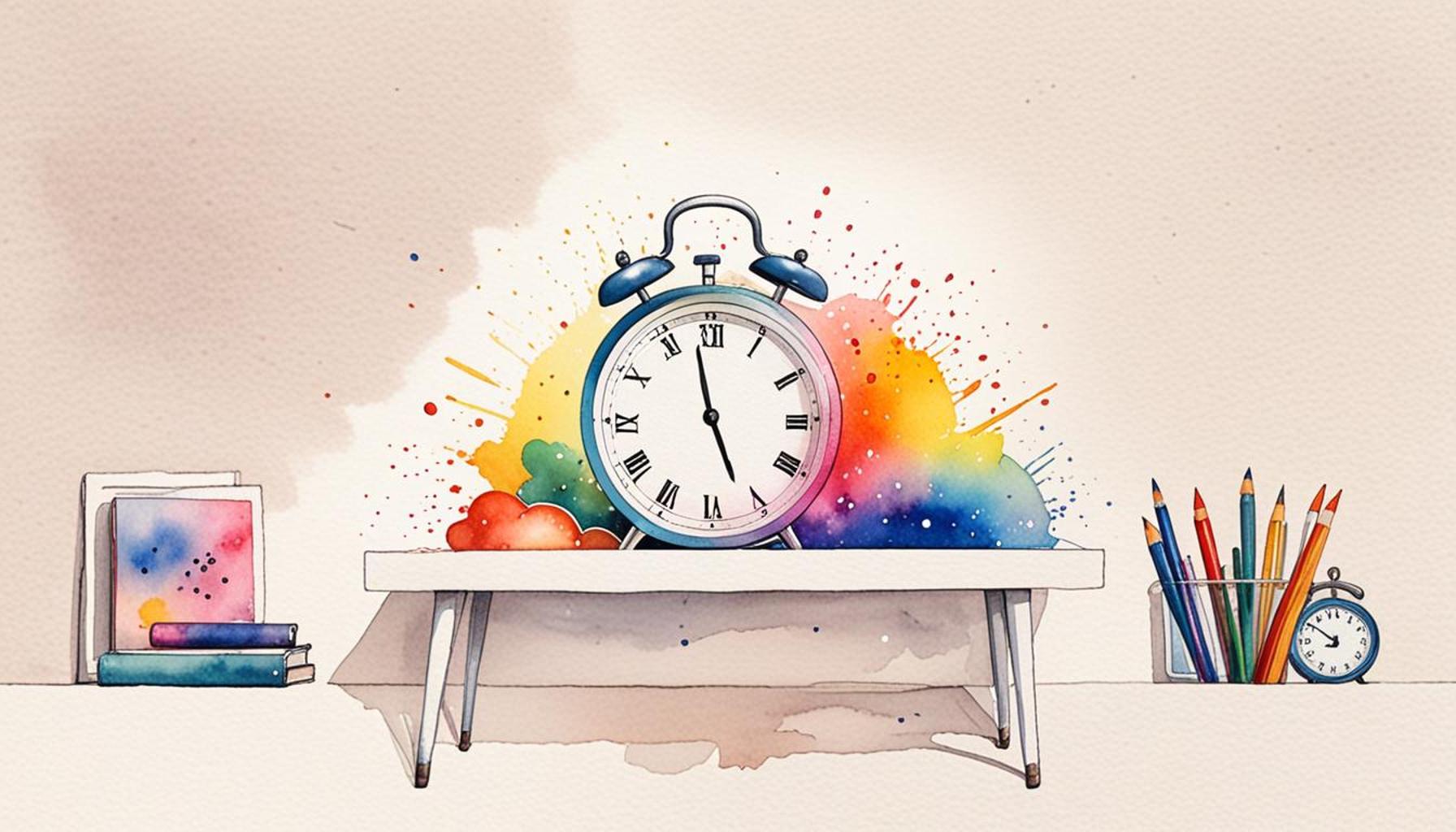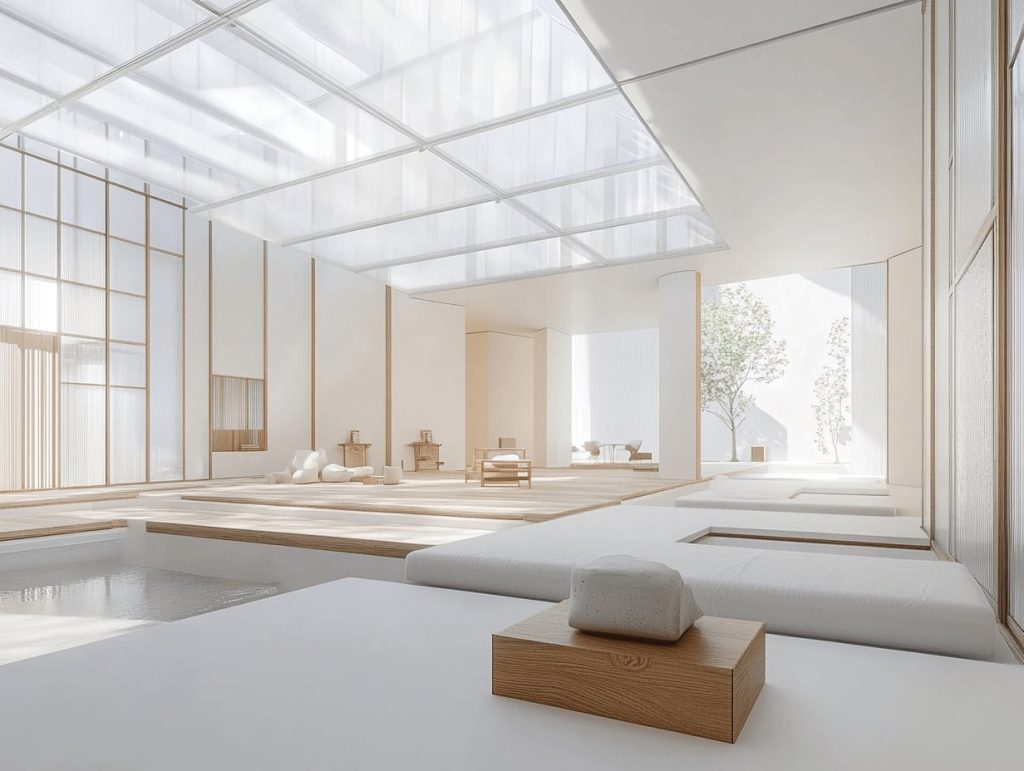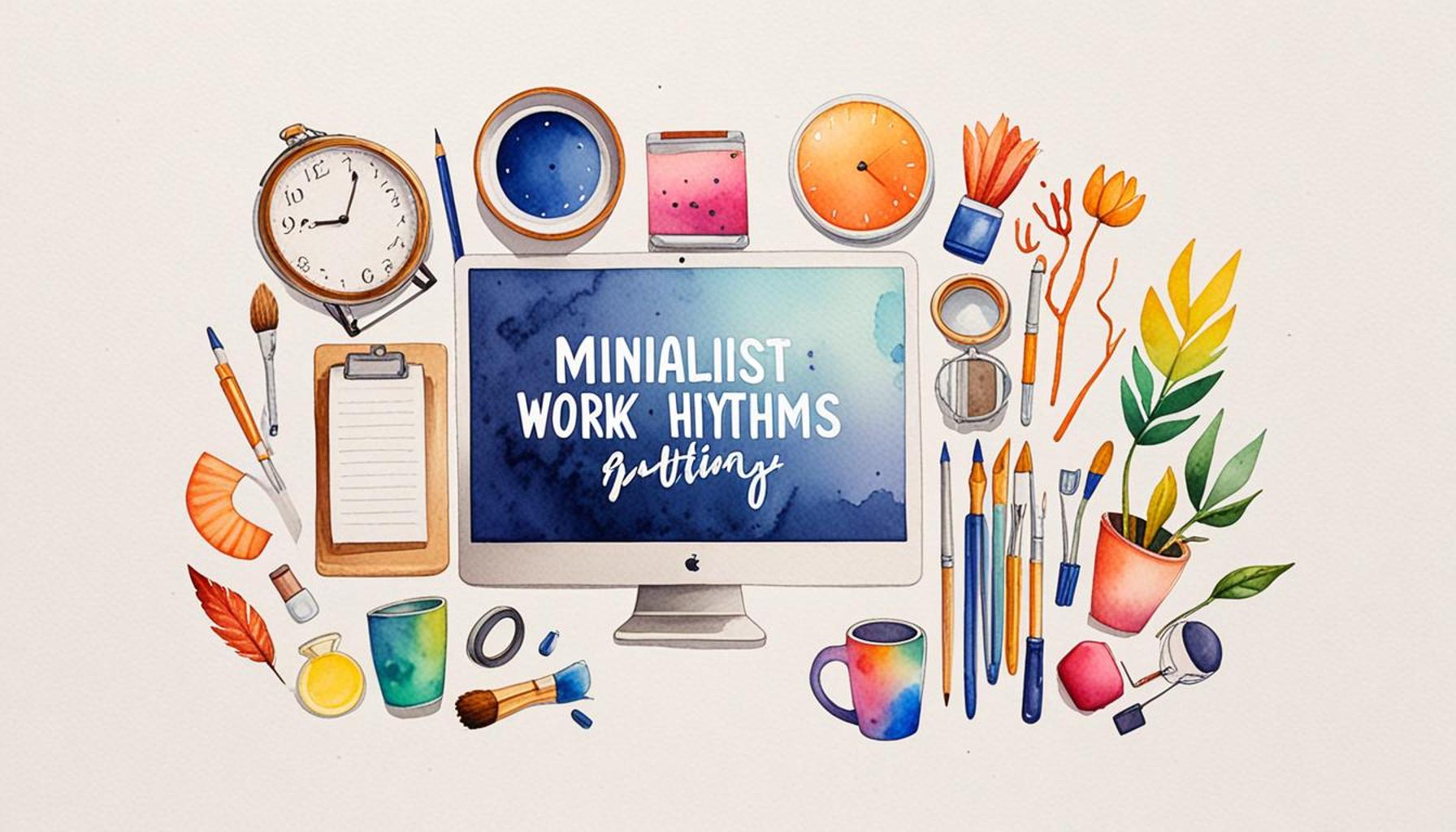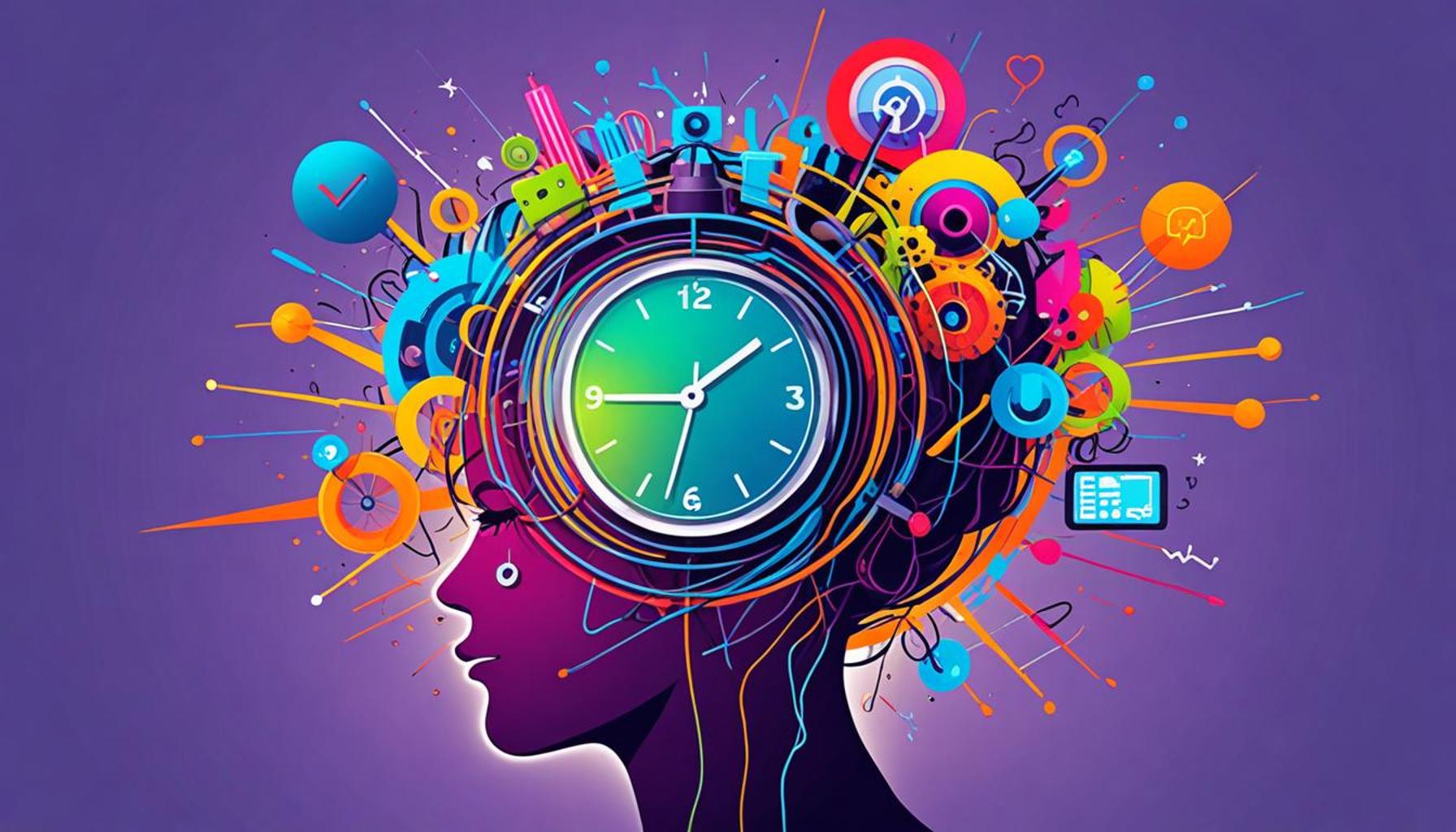The Influence of Physical Space on Time Management: Creating a Minimalist Environment to Increase Productivity

Exploring the Impact of Physical Environments on Time Management
A well-designed physical environment plays a crucial role in enhancing productivity. The impact of physical space on our ability to manage time effectively is profound, often influencing our focus and motivation. When individuals feel overwhelmed by their surroundings, their ability to concentrate on tasks diminishes, leading to wasted time and frustration.
Research indicates that a cluttered environment can lead to distractions, disrupting workflow and mental clarity. A study published by the Princeton University Neuroscience Institute found that clutter in visual fields competes for your attention, making it harder to focus on the tasks at hand. This psychological effect emphasizes the need for an organized workspace. Consider these factors when evaluating your space:
- Clutter Level: Excess items can overwhelm the mind. For instance, a desk piled high with papers, coffee cups, and outdated technology creates a physical and mental barrier to productivity.
- Lighting: Proper lighting can boost energy and mood. Natural light, when available, is ideal for workspaces; it not only elevates mood but also supports circadian rhythms, improving overall well-being.
- Comfort: Ergonomic furniture reduces fatigue and enhances concentration. An office chair designed for long hours can prevent back pain, allowing individuals to maintain focus on tasks without being distracted by discomfort.
Adopting a minimalist approach allows for streamlined focus, creating an atmosphere conducive to deep work. This philosophy centers around the idea that by reducing excess, you enhance the function and aesthetic of a space. For example, consider the success of companies like Google, which promote an open office concept filled with clean lines and minimal distractions, resulting in increased collaboration and productivity.
A well-organized environment can also contribute to better time management by encouraging quick decision-making. When everything has its place, less time is wasted searching for necessary items. This leads to improved efficiency, making it easier to handle tasks effectively. Implementing techniques such as the two-minute rule—where you handle any task that takes two minutes or less immediately—can be facilitated by a clutter-free environment.
In this article, we will explore practical strategies for designing a minimalist workspace. You will learn about organizing methods, the importance of thoughtful layout, and how vibrant yet calming colors can contribute to a productive environment. By reclaiming your time and transforming your surroundings into a haven of productivity, you can find balance and greater satisfaction in your work life. Stay tuned as we delve into the specifics of creating a workspace that works for you.

DISCOVER MORE: Click here to learn about the role of natural light in minimalist design
Principles of Minimalist Workspace Design
To harness the full potential of a minimalist environment, it is essential to adopt core principles that work in tandem with the goal of boosting productivity. A minimalist workspace emphasizes functionality, simplicity, and efficiency—elements that can significantly affect time management. By decluttering your surroundings, you make room not only for essential tools but also for clear thought and focused execution of tasks.
One of the fundamental principles of minimalist workspace design is maximizing organization. An organized space ensures that all resources and tools are easily accessible. For example, integrating drawer organizers, wall-mounted storage, or file systems can keep essential documents and materials neatly stored away while still within reach. Here are several practical strategies to consider for an organized workspace:
- Clear the Surface: Maintain a clean desktop by only keeping items necessary for immediate tasks. This will help minimize distractions and provide a more inviting environment for work.
- Priority Zones: Create designated areas for specific activities—one for tasks that require deep focus and another for collaborative projects. This can help transition your mindset based on the task at hand.
- Digital Decluttering: “Less is more” applies to your digital space too. Organizing files into folders, minimizing desktop icons, and unsubscribing from unnecessary notifications can help streamline your workflow.
Another vital aspect is the importance of layout. The physical arrangement of furniture and tools can directly affect your efficiency. An open layout promotes a sense of freedom and encourages collaboration, while a more closed-in environment might be better for dedicated focus. For example, arranging your desk to face a window not only provides natural light but also offers a change of scenery that can invigorate your thoughts as you work.
Moreover, the concept of functional decor should not be overlooked. Utilizing art and design elements that resonate with you can enhance your mood and invigorate creativity without creating chaos. Calming colors and aesthetically pleasing designs have been shown to influence the psychological atmosphere of a workspace, further assisting in productivity.
In summary, adopting a minimalist approach in your workspace design involves a conscious effort to prioritize organization, optimize layout, and carefully select decor. By embracing these principles, you can create an environment that not only reduces distractions but also fosters a culture of productivity. As the article continues, we will delve deeper into how specific organizing methods, conscious layout planning, and the psychological effects of color can culminate in a workspace that allows for effective time management.
| Environmental Factors | Impact on Time Management |
|---|---|
| Clutter-Free Workspaces | Enhances focus and reduces distractions, leading to improved efficiency and quicker task completion. |
| Natural Light Utilization | Boosts mood and energy levels, allowing for sustained productivity over longer periods. |
| Purposeful Design Elements | Encourages creativity and strategic thinking, resulting in better time management and prioritization of tasks. |
| Ergonomic Furniture | Reduces physical strain, making it easier to maintain focus and continuity during work sessions. |
In a world increasingly burdened by distractions, the importance of a minimalist environment cannot be overstated. Each environmental factor listed not only contributes to time management but also reflects a holistic approach toward individual productivity. By eliminating unnecessary items, embracing natural light, and investing in ergonomic furniture, individuals create spaces that promote focus and creativity. The interplay of these elements fosters a setting where productivity can thrive, providing the perfect conditions for effective time management. As you explore the influence of physical space more deeply, consider how tailoring your environment to these principles could lead to significant changes in your daily productivity.
DISCOVER MORE: Click here for sustainable decluttering tips
Organizational Strategies for a Minimalist Workspace
In the pursuit of a minimalist workspace, implementing effective organizational strategies is paramount. These methods not only enhance your ability to manage time but also contribute to an overall increase in productivity. The right organizational system helps streamline workflow, enabling individuals to focus on what truly matters without the burden of physical and digital clutter.
One effective strategy is the Five-Second Rule, a concept popularized by Mel Robbins, which suggests taking immediate action on tasks that can be completed in five seconds or less. By incorporating this rule into your workspace, you can minimize procrastination and ensure that small tasks are handled promptly. This approach fosters a sense of accomplishment and contributes to a more organized environment, as it prevents minor clutter from accumulating.
Another essential tool for maintaining a minimalist space is the use of digital task management applications. Platforms like Trello, Asana, or Todoist allow you to break down larger projects into manageable steps while keeping your workspace clear of physical reminders. This transition from paper-based to digital organization not only aligns with minimalist principles but also enhances flexibility, enabling you to access tasks from various devices, ensuring nothing slips through the cracks.
In conjunction with digital tools, employing the two-minute rule can further enhance time management. If a task takes less than two minutes to complete, do it right away instead of putting it off until later. This principle encourages a proactive attitude towards small tasks, preventing them from cluttering your mind and workspace.
Moreover, a minimalist workspace often incorporates the KonMari method, popularized by Marie Kondo. This method emphasizes retaining only those items that “spark joy.” Applying this method can lead to a transformative decluttering process, wherein individuals assess each item in their workspace based on its value and function. The result is an environment filled only with tools and elements that contribute to productivity and personal satisfaction.
Creating Functional Zones
In addition to decluttering, the concept of functional zones further supports a minimalist approach. By dividing your workspace into distinct areas for specific tasks—such as a dedicated reading nook, a creative project area, and a focused work zone—you can cultivate an environment that promotes different modes of thinking and productivity. This approach allows you to physically and mentally shift gears according to the task, which can greatly improve time management.
The use of modular furniture can also play a significant role in organizing functional zones effectively. Desks that can be adjusted for sitting or standing, or furniture that can be easily moved to create alternative configurations, allows for flexibility in how spaces are utilized. This adaptability encourages experimentation with different layouts that align with personal work styles and task requirements, providing a breathable workspace that enhances productivity.
Finally, integrating natural elements into your workspace, known as biophilic design, can improve both mood and focus. Including plants, natural light, and organic materials not only makes a space more aesthetically pleasing but has also been shown to reduce stress and enhance cognitive function. Research suggests that spending time in environments that incorporate nature can boost creativity and overall well-being, further supporting effective time management.
DISCOVER MORE: Click here to optimize your space
Conclusion: The Power of Minimalism in Productivity
In an era where distractions are abundant, creating a minimalist environment has emerged as a crucial strategy for enhancing productivity and optimizing time management. The relationship between our physical space and how we allocate our time is undeniable; a cluttered environment can lead to a cluttered mind, stifling both creativity and efficiency. By embracing minimalism, individuals can remove the barriers imposed by excess and allow for clearer focus on essential tasks.
Implementing effective strategies—such as the Five-Second Rule and the two-minute rule—not only promotes action but also instills a sense of discipline that is often lost in chaotic spaces. Tools like digital task management applications can streamline workflow and ensure that productive actions are accessible just when they are needed. Further, the establishment of functional zones tailored to specific tasks enhances mental shifts, making transitions between different work modes seamless.
Ultimately, adopting the principles of biophilic design and the KonMari method can lead to a workspace that inspires joy, creativity, and overall well-being. As you venture into the realm of minimalism, consider not just the aesthetics but the profound impact your environment can have on your productivity. With a focused approach to creating a minimalist workspace, you can harness the full potential of your time—transforming how you work and live.
As you reflect on these insights, take the opportunity to reevaluate your own workspace. Small adjustments can yield significant outcomes, allowing you to cultivate an environment that not only promotes productivity but also fosters a deeper connection to your work.


